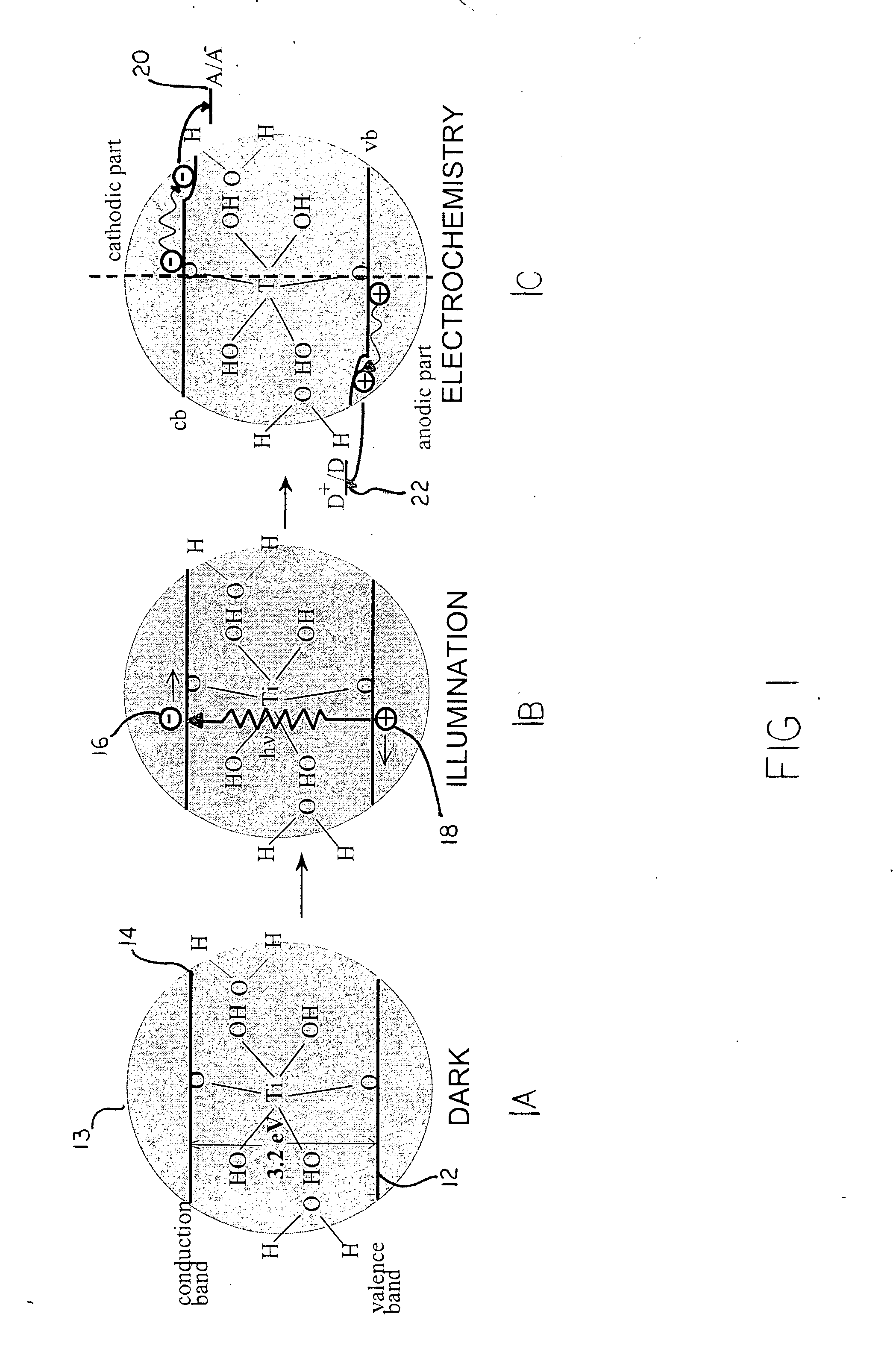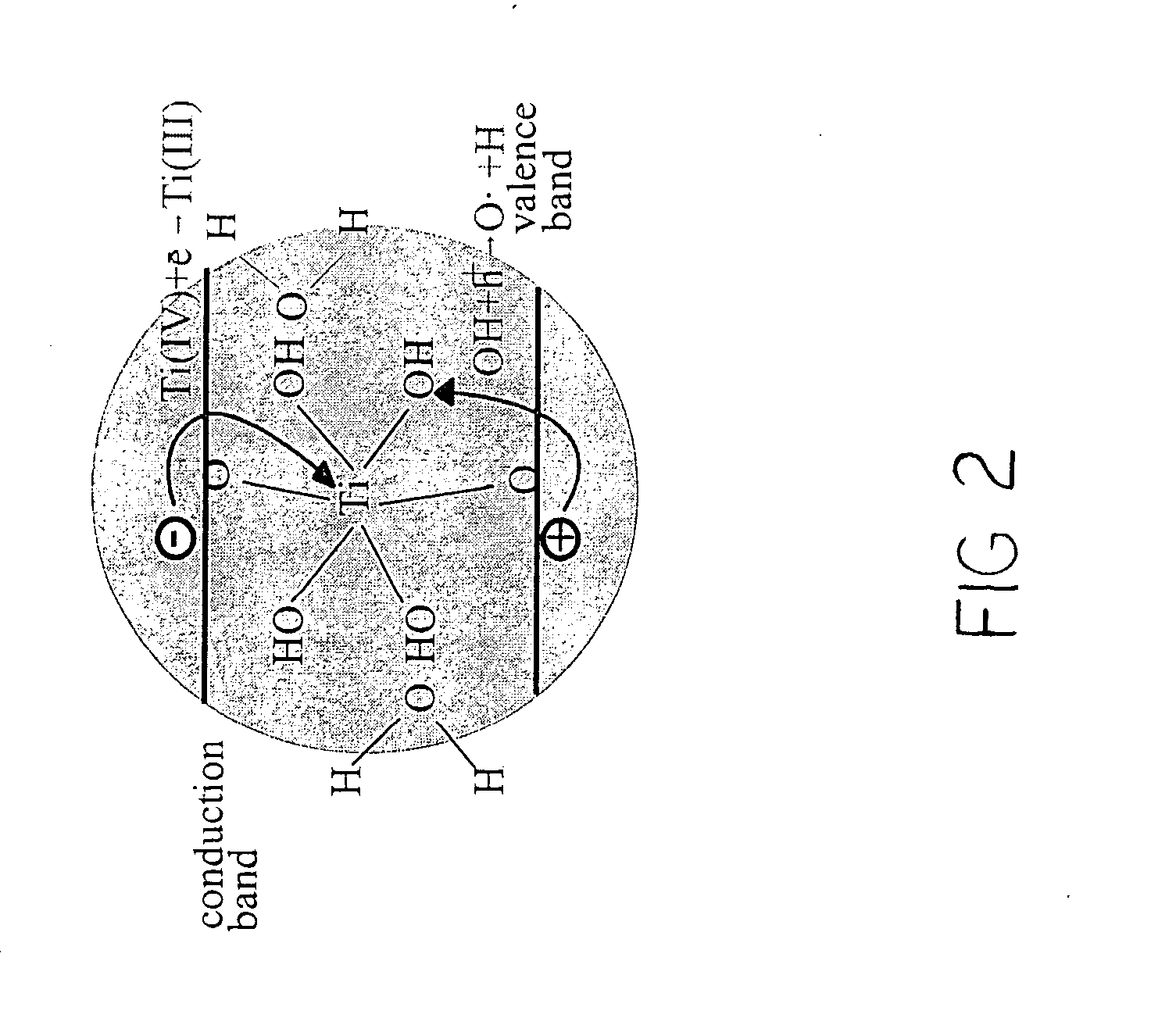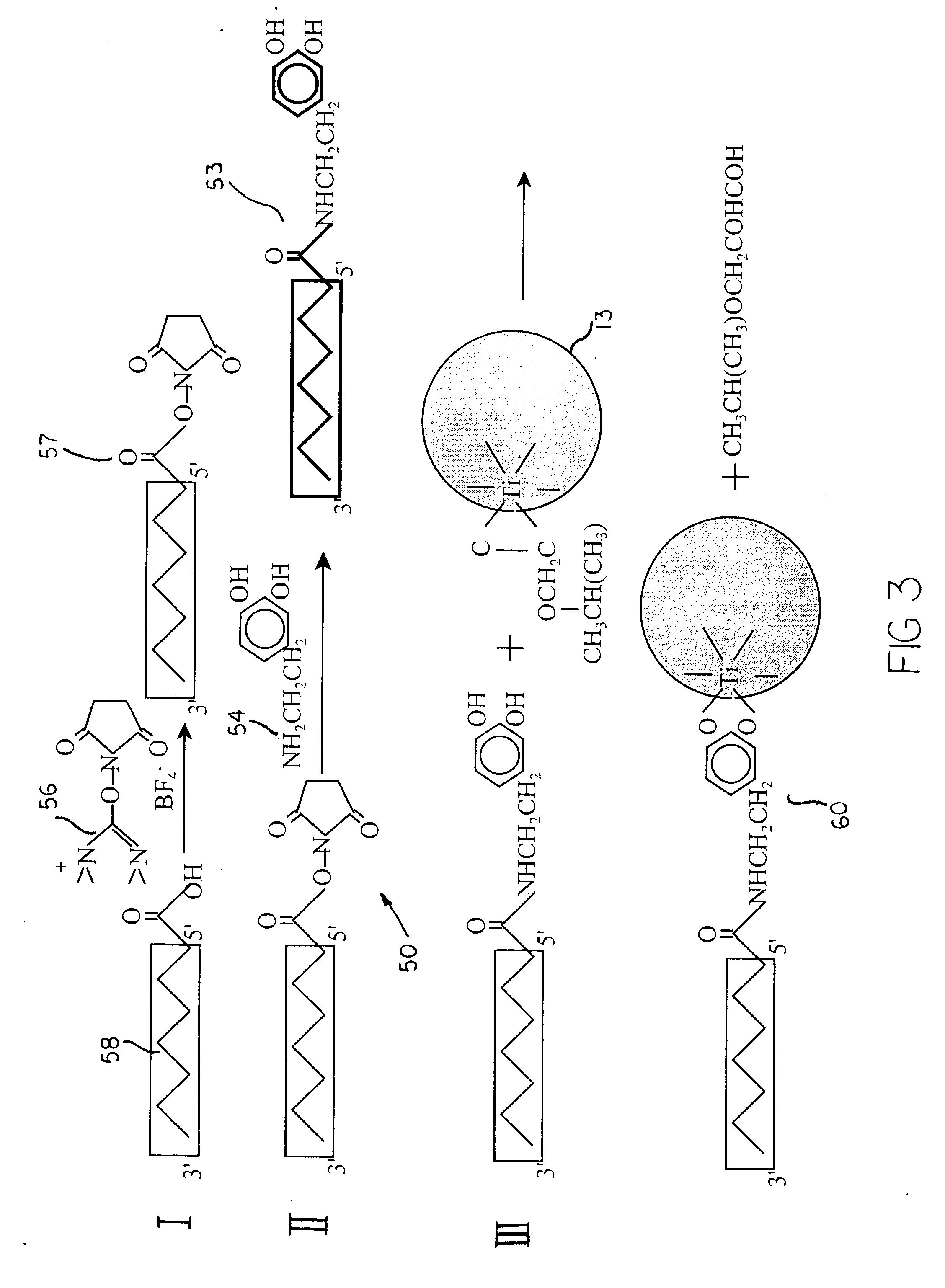Use of metal oxide semiconductors to manipulate biological molecules
a technology of metal oxide semiconductors and biological molecules, applied in the direction of liquid/fluent solid measurement, material electrochemical variables, instruments, etc., can solve the problems of short-lived fluorescence moieties, obliterating the “fingerprint” of other concomitantly used fluorescent tags, and each dye requires a different excitation energy, etc., to facilitate simultaneous action of delivered biomolecules, facilitate selective adsorption and selective chemical reactions, and facilitate particle-attached molecules
- Summary
- Abstract
- Description
- Claims
- Application Information
AI Technical Summary
Benefits of technology
Problems solved by technology
Method used
Image
Examples
Embodiment Construction
[0042] The invention relates to multiple biological use of nanocrystalline semiconductors bound to oligonucleotides, DNA segments and peptides for selective binding and hybridization, photophysical and photochemical DNA and protein chemistry in vitro and in vivo. In one specific example, surface modification of nanocrystalline metal oxide particles with ortho substituted hydroxylated aromatic ligands was found to result in bidentate coordination of surface Ti atoms. Due to the specific bindings of surface modifiers, the optical properties of small titania particles change and the onset of absorption shifts to the red, compared to unmodified nanocrystallites (for salicylate 0.8 eV, ascorbate 1.6 eV and dopamine 1.85 eV). The binding is exclusively characteristic of small particle colloids in the nanocrystalline domain and was found to be a consequence of adsorption induced reconstruction of nanoparticle surface.
[0043] A cornerstone of the invention is the enhanced charge separation ...
PUM
| Property | Measurement | Unit |
|---|---|---|
| energy | aaaaa | aaaaa |
| energy | aaaaa | aaaaa |
| band gap | aaaaa | aaaaa |
Abstract
Description
Claims
Application Information
 Login to View More
Login to View More - R&D
- Intellectual Property
- Life Sciences
- Materials
- Tech Scout
- Unparalleled Data Quality
- Higher Quality Content
- 60% Fewer Hallucinations
Browse by: Latest US Patents, China's latest patents, Technical Efficacy Thesaurus, Application Domain, Technology Topic, Popular Technical Reports.
© 2025 PatSnap. All rights reserved.Legal|Privacy policy|Modern Slavery Act Transparency Statement|Sitemap|About US| Contact US: help@patsnap.com



